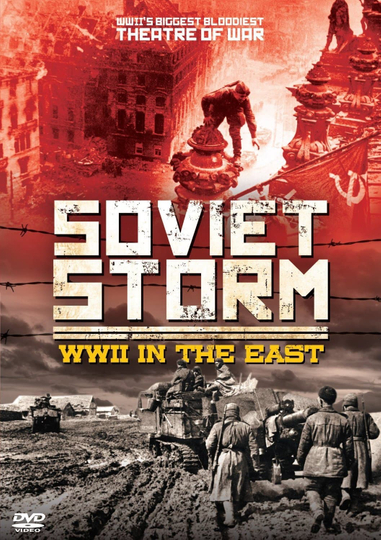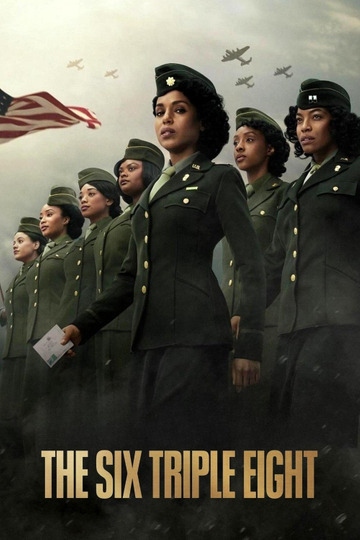Season 2 Episodes
1. The Liberation of Ukraine
Soviet forces advancing on Kiev are briefly stalled at the Dnieper River until a tank unit crosses a shallow ford and promptly drives the Nazis from the city. The Soviet charge through Ukraine becomes a war of attrition for the Nazis which are quickly weakened to the point they can no longer counter attack. The Soviets soon capture the critical Romainian oilfields. As they drive into Hungary, Hitler reinforces his southern forces with units badly needed to defend against the Soviet main offensive in the German homeland.
2. Operation Bagration
In 1944 it is the Soviet's turn for a summer offensive. They quietly prepare a massive assault in Beyelosussia under cover of darkness and a successful campaign in the Urkraine that convinces the Nazis to move units defending Beyelosussia to the Ukraine. The Soviets unleash a blitzkrieg style surprise attack in Beyelosussia that succeeds beyond their wildest dreams and to the disbelief of the Soviet's allies. Hitler's demand that German forces hold their positions ultimately depletes Nazi forces as one army sized unit after another is encircled and destroyed.
3. War in the Air
On the eve of Operation Barbarosa the Luftwaffe out classed the Soviet Air Force in pilot training and experience, battle tactics, aircraft capability and armament and very soon, aircraft quantity. Yet the Red Air Force steadfastly stood up to the Luftwaffe making gradual progress in all these area through not quite reaching parity by the close of World War Two. But by then Soviet aircraft vastly out numbered the Luftwaffe which could not compete with Soviet production capacity and combat attrition. Take a close look at the Soviet fighter aircraft and meet the stellar pilots of the war.
4. War in the Sea
Soviet naval strategy during World War Two deliberately focused on submarine warfare. So the Soviets maintained a relatively small surface navy. While the Baltic surface fleet was important for the defense of Leningrad, most other important engagements involved submarines. Notable are the sinkings of two Turkish freighters in the Black Sea that were loaded with chrome ore, a minor but crucial component of steel. The Nazis managed to marginalize the Baltic fleet with a submarine net midway through the war. But the Soviet-Finnish armistice signed late in the war enable Soviet ships to escape to harass the German withdrawal from Poland.
5. The Partisan Movement
The Soviet partisan movement began immediately after the commencement of Operation Barbarossa. It was centrally commanded by OMSBON, very active and well organized to coordinate operations with the Red Army's military objectives. In 1941 the Soviets had very few experienced guerrilla commanders since the majority had succumb to Salin's purges so many. many partisan units were lost that year. But as the war continued partisan manpower grew to the equivalent of 30 army divisions. Despite their thousands of successful raids few had a major impact even in toto. But their ongoing operations successfully diverted and distracted the Nazis from battlefield operations sometimes resulting in Nazi units being pulled from the front lines to combat them.
6. Secret Intelligence of the Red Army
On the eve of Operation Barabarossa Soviet spies under cover as embassy employees were expelled from Nazi occupied countries effectively ending Soviet espionage about Nazi Germany. Thereafter the Soviet's intelligence on the Nazis was limited to espionage networks in other Axis countries such as Richard Sorge's spy ring in Japan. But as the war progressed the Soviets succeeded in embedding a cadre of double agents in the Wemehr who were secretly working for the NKVD passing disinformation to the Nazis and sending Nazi intelligence to the Soviet Union.
7. The Battle for Germany
Soviet forces traverse Poland quickly as they encounter relatively few major army units. The volkssturm, national militia, that Hitler hoped would offer fanatical resistance, were poorly armed and surrendered quickly, on one occasion, without a shot fired. But on German soil Hitler's festung, fortress city, concept is taken seriously, in part due to the Soviet army's brutal retribution against the civilians. Then at Koenigsberg the Nazis commit several SS divisions in a fierce but unsuccessful defense.
8. The Battle of Berlin
Germany has without question lost World War II in Europe, but Hitler, by now a heavily medicated and deluded character, refuses to give up hope; he orders the roughly one million German soldiers left in the ruined city to defend Berlin, now a strange mix of combat veterans, teenage boys from the Hitler Youth, and old men from the People's Army.
9. War Against Japan
In exchange for territorial concessions Stalin agreed to join the war against Japan within 90 days of Germany's surrender negating the 1941 armistice with Japan. Exactly ninety days later Soviet forces invaded Manchuria, a region critical to Japan for fuel and other raw materials. Despite major logistical challenges including a mountain barrier, the battle hardened Soviets achieved rapid victories against the obsolete Japanese forces. Coupled with the nuclear bombing of the Japanese homeland, the Japanese finally decided to consider surrender. But the Japanese delayed, first hoping to negotiate better surrender terms and then failing to call a prompt cease fire after their surrender. During the interim Soviet forces were able to occupy and retain after the war Sakhalin and the Kiril islands.



























